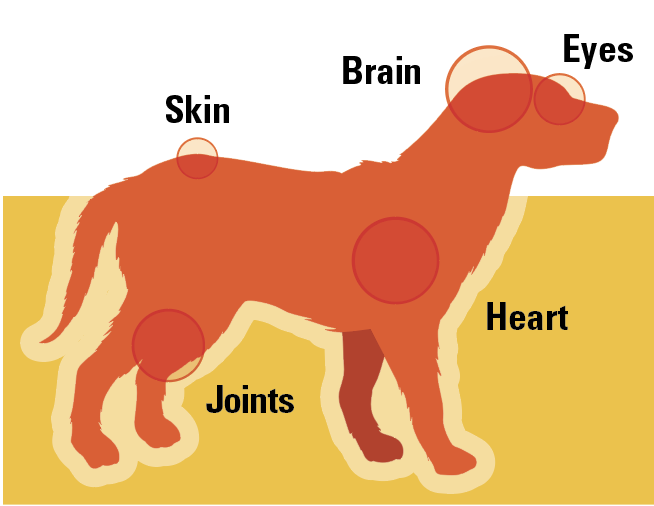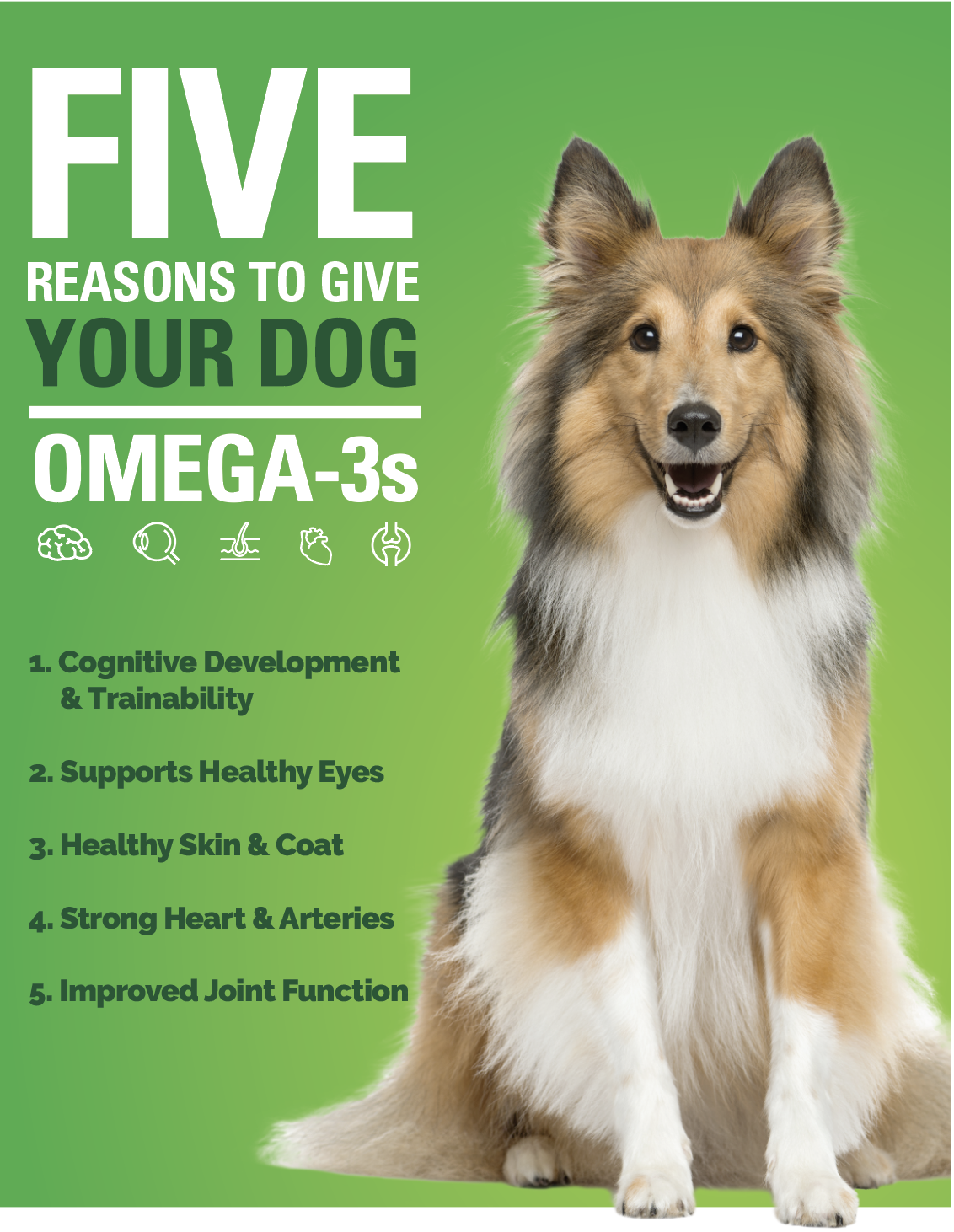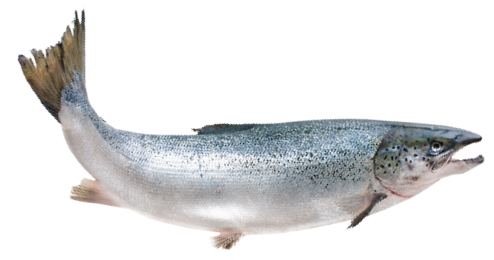Omega-3s are critical for healthy minds. We know that this is true for humans. Omega-3s help moderate impulsive behavior, boost cognitive processes, and may reduce instances and symptoms of depression. What we’re learning now is that they are also a requirement for mental stability and well-being in canines.
In fact, low omega-3s can make canines aggressive. Comparing clinically healthy dogs, one group showing aggression and the other not, researchers discovered that aggressive dogs had a much lower level of docosahexaenoic acid (DHA) and a much higher ratio of omega-6 fatty acids compared to non-aggressive healthy dogs.
An interesting side note to this study is that aggressive dogs had lower cholesterol levels than their well-adjusted study counterparts. I find this especially compelling, because the “war on cholesterol” has done a lot of damage for humans. We need cholesterol to help synthesize vitamin D and hormones, and to do much of the necessary work in the mind and body. It looks like dogs need cholesterol, too.
A pilot study supplemented aggressive canines with a combination of DHA, eicosapentaenoic acid (EPA), magnesium, and zinc for a total of about four months.
Even at the three-month mark, dogs who had exhibited aggression, destructiveness, and inappropriate elimination, were doing much better.

Heart & Artery Strength
Omega-3s can improve heart health in dogs for the same reasons they can in humans: they are anti-inflammatory, manage lean body mass, and fight arrhythmic effects.
They also keep blood pressure in check and help build strong arteries and blood vessels, which helps preserve eyesight as well.
Joints, Mobility, & Arthritis
Omega-3 fatty acids stop inflammatory damage to the building blocks of cushioning cartilage.
One randomized, placebo-controlled, double-blind study found positive – if somewhat contradictory – results for canines with osteoarthritis taking omega-3s. While some of the statistical numbers between the two groups didn’t show any statistical difference, the dogs in the omega-3 group showed positive changes in the Helsinki Chronic Pain Index, Positive Vertical Force parameters (indicating leg strength), overall quality of life, use of nonsteroidal anti-inflammatory drugs (NSAIDs), everyday situations, and an improved skin and coat.
Another study found that an omega-3 supplemented food improved weight bearing in dogs with osteoarthritis in 90 days. In this case, 82 percent of the dogs in the test group—versus 38 percent in the control (placebo) food group—saw positive changes in a test of peak vertical force values; the effort a dog will use when they are standing upright. If a dog is dealing with arthritis, they use less effort – it is simply too painful. When they’re feeling well, they stand up straighter, have a livelier gait to their walk, and expend more energy and greater force. In this case, omega-3s made a very noticeable difference.
Skin & Coat
Omega-3s intake is often linked to healthier skin and coat in canines, because these nutrients help build the structural layers of the epidermis. Dogs dealing with atopic dermatitis can really benefit from omega-3 supplementation.
Research has shown that in just two months, the lipid content of the outer layer of the skin markedly improved after getting food fortified with these essential fatty acids.
Phospholipids for Omega-3 Absorption & More
Phospholipids absorb much better than a fish oil, and are much more stable. When omega-3s are bound to them, there is little to no chance of rancidity and the beneficial fatty acids are more easily absorbed into the body. Plus, these phospholipids are valuable on their own, for young puppies, senior dogs, and every age between:
• Phosphatidylcholine (PC) – Helps produce neurotransmitters, protects nerve cells, and preserves the mitochondria – the “engine” of cells – from oxidative damage.
• Phosphatidylethanolamine (PE) – Helps build the myelin sheath that surrounds nerve cells, keeping brain signals firing properly.
• Phosphatidylinositol (Pl) – Plays a major role in nerve, brain, and muscle signals.
• Sphingomyelin (Sph) – Found in the myelin sheaths of neurons; they are critical for cognitive processes, a perfect smart supplement for training.
• Phosphatidylserine (PS) – Excellent for broad-spectrum brain health, including mood and working memory. With this phospholipid on board, an old dog can definitely learn new tricks!

Omega-3s the Smart Way
I think the best omega-3 for dogs is when these essential fatty acids are bound to phospholipids. In fact, many phospholipids are considered powerful nutrients in their own right. Peptides are an additional nutrient from fish that even without the strength of omega-3s and phospholipids–have been shown to reduce anxiety and inhibit oxidative damage to nerve cells that carry signals in the brain.

We all want what’s best for our best friend. I think you’ll find that providing a supplemental form of omega-3s bound to phospholipids and providing peptides will yield life-giving benefits for your dog for years to come.
Here is the formula I suggest:
Whole Omega-3 Phospholipid Peptide Complex from Atlantic Salmon
(Salmo salar)..................................100 mg
